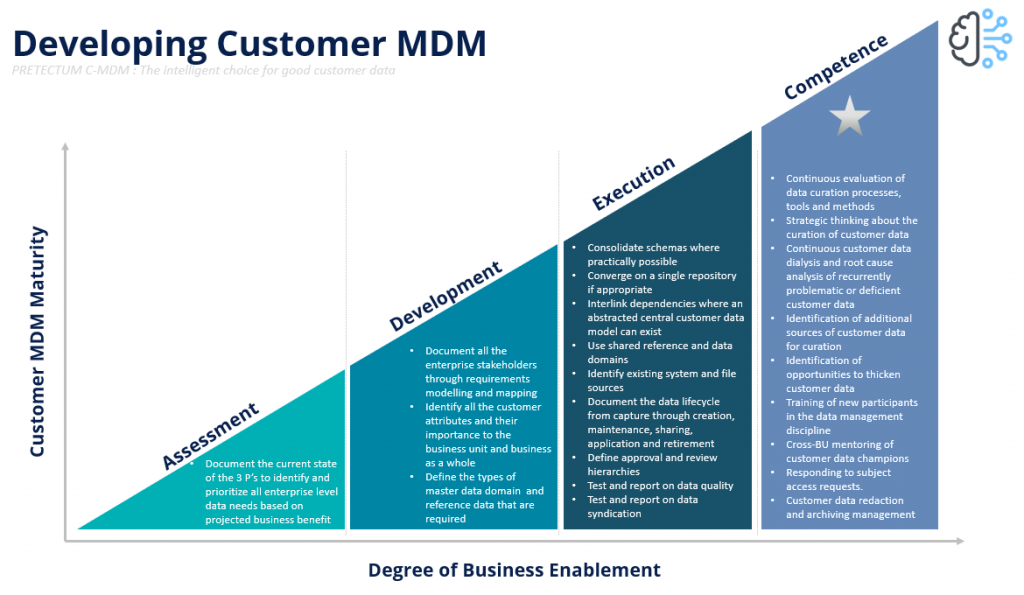Customer data management is the processes and procedures that an organization has in place for the collection, management, use, and analysis of customer data.
Organizations that have a serious approach to data management in general, find that active customer data management reduces potential data errors through the adherence to processes and policies for the collection, change, and use of customer data.
Good data management practice seeks to establish trust in the data across the organization for decision-making. Reliable, consistent, complete, and relevant customer data enables organizations to be proactive, efficient, and responsive to the needs of customers.
There are four types of customer data typically considered to be important. Master data, engagement data, behavioural data, and attitudinal data.
Customer data management may encompass the handling of all four of these types of data but the practice of customer master data management typically only focuses on the master data elements themselves which are principally identity-related.
All of these aspects of customer data could be incorporated into the Pretectum CMDM, it depends on how you want to think about customer master data.
It is easy to think of master data as basic data, however, customer master data is often anything but basic. The customer master may include markers and flags or aggregates that relate directly to customer engagement, behaviour, and attitude.
Best practices for customer master data management
There are at least seven best practices that should be considered for optimal customer master data management.
- Establish clear policies and procedures governing the collection, storage, management, and distribution of customer data. Hold teams and individuals accountable for adhering to these guidelines, creating the foundation for a robust data governance framework.
- Effectively communicate and educate your organization on the established data governance policies and procedures. Conduct regular audits and reviews, ensuring alignment with organizational practices to guarantee adherence and compliance.
- Adopt a minimalist approach to gathering customer data, focusing solely on information essential for meaningful customer engagement and transactions. Comply with privacy laws and data regulations, especially concerning Personally Identifiable Information (PII).
- Collaborate with customers to determine the types of data to collect, explaining the reasons behind these choices. Utilize an evidence-based approach to articulate customer consent regarding data usage, forming valuable first-party data obtained directly from customer relationships.
- Assess the intrinsic value of customer data and consider potential risks if it falls into unauthorized hands. Implement stringent controls over customer master data to prevent unauthorized access.
- Maintain accurate and comprehensive records of customer information, applying a data quality approach that ensures consistency, completeness, accuracy, and currentness, while eliminating duplicates.
- Adopt a least access model for providing access to customer master data within the organization, ensuring that only those who require such access have it. This approach enhances data security and minimizes the risk of unauthorized use.
Pretectum CMDM is able to help facilitate these best practices depending on the objectives of your organization and the style of customer master data management that you have in mind.
We have a maturity model concept that we think you should consider in this context.


